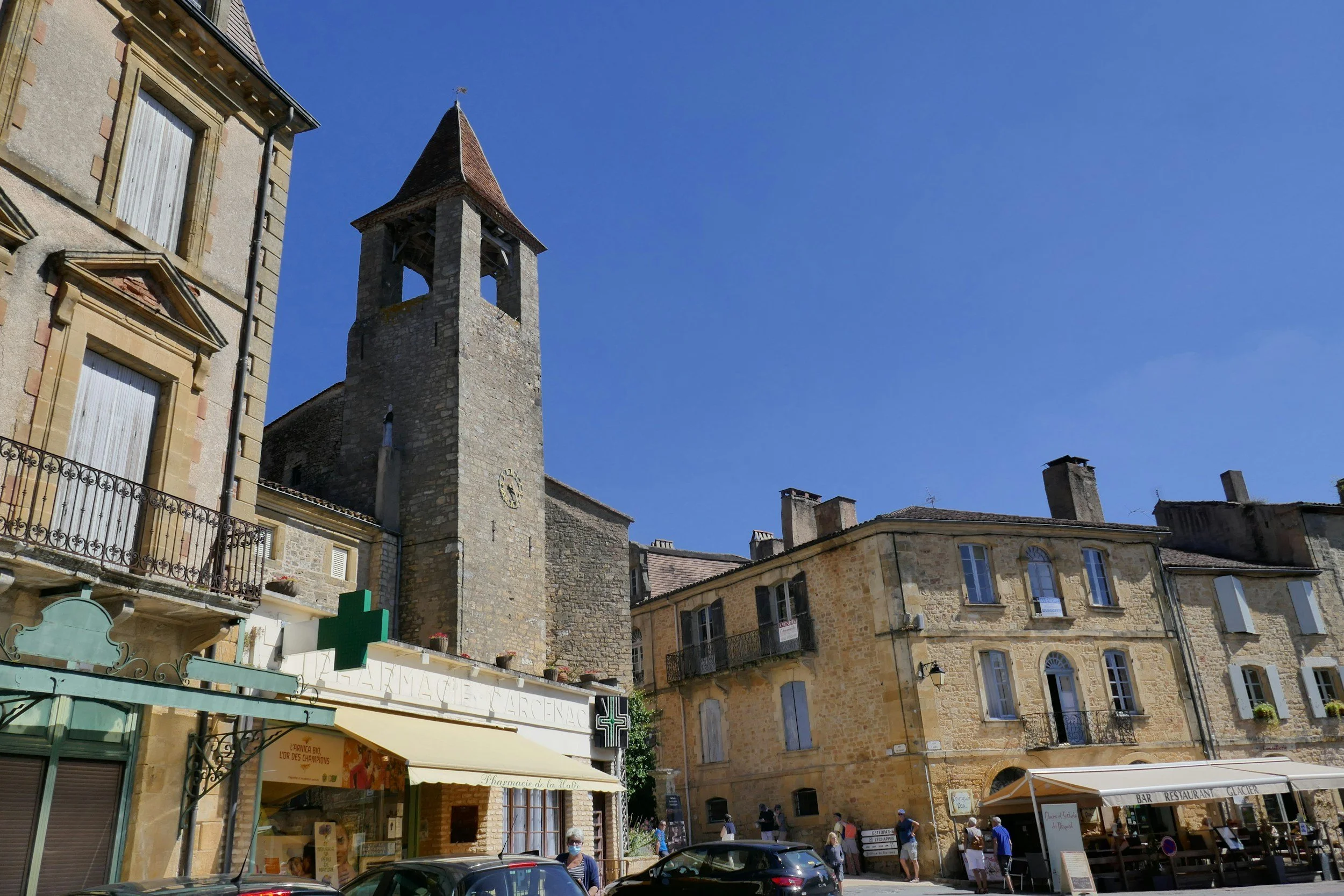
A Brief Timeline of Belvès
Prehistoric Roots
Long before the village took shape, the surrounding area was already inhabited.
Traces of prehistoric life have been found in nearby caves—proof that this hilltop has attracted people for thousands of years.
8th–9th Century – The Early Fortified Site
Belvès began as a defensive stronghold. Its elevated position made it ideal for watching over the valley and protecting local populations during times of invasion and unrest.
11th–12th Century – Medieval Beginnings
The village started to take form as a fortified town (a “castrum”), with stone ramparts, narrow lanes, and lookout towers. Churches and simple homes were built, and life centered around agriculture and faith.
13th–14th Century – Turbulent Times
Belvès was caught in the conflict between the French and the English during the Hundred Years’ War. The fortified walls were reinforced, and underground shelters—like the famous troglodyte dwellings—were used to hide and protect the townspeople.
15th–17th Century – A Time of Growth
After the wars, Belvès grew into a small but prosperous market town. It gained new stone houses, a central covered market (still in use today), and became known for its “seven bell towers,” each tied to a different religious building.
18th–19th Century – Peaceful Village Life
Life slowed down as Belvès became more rural and agricultural. Farming, local trade, and craftsmanship shaped the rhythm of daily life. The train line eventually arrived, connecting the town to the wider region.
20th Century – Preservation and Discovery
Belvès remained largely untouched by industrialization, which helped preserve its medieval character. Tourism began to grow mid-century, and the town was later recognised as one of Les Plus Beaux Villages de France—a title it still proudly holds.
Shadows and Courage: Belvès During the Second World War
While Belvès is best known for its medieval streets and sunlit market square, the village also carries quieter, more solemn stories from the 20th century. During the Second World War, the Dordogne region—remote, wooded, and difficult to access—became both a place of peril and a refuge.
On 26 August 1942, the authorities in Périgueux—the capital of Dordogne—carried out the first major roundup of foreign Jews in the department. Acting under Vichy orders, French police arrested hundreds of individuals, many of whom were later deported to Auschwitz. While records do not specifically mention arrests in Belvès on that exact date, it is likely that surrounding villages, including Belvès, experienced similar actions in the weeks and months that followed.
In the hills above the village, especially in the vast and secluded Bessède forest, groups of young men began to disappear from public view. Some were avoiding the Service du Travail Obligatoire (STO)—the forced labour programme sending French men to work in German factories. Others were already engaged in acts of defiance. These men, joined by Spanish republicans, escaped prisoners, and eventually Allied parachutists, would form local Maquis groups, laying the groundwork for resistance operations across the Dordogne. By 1943, such groups were growing in number and strength, striking German targets and sabotaging infrastructure, often aided by locals at great personal risk.
While Belvès may not appear in every wartime archive, the region’s resilience is echoed in oral histories passed from family to family. Locals remember the tension, the courage, and the quiet bravery shown in small acts—sheltering a stranger, hiding a radio, or simply saying nothing.
“The forest kept its secrets, and so did the people. That was how we survived,” recalls one long-time resident.
Today, there are few plaques or monuments marking this chapter of Belvès’ past—but the memory remains, woven into the character of the village. As with its medieval troglodyte caves, some stories here lie just beneath the surface, waiting to be discovered.

